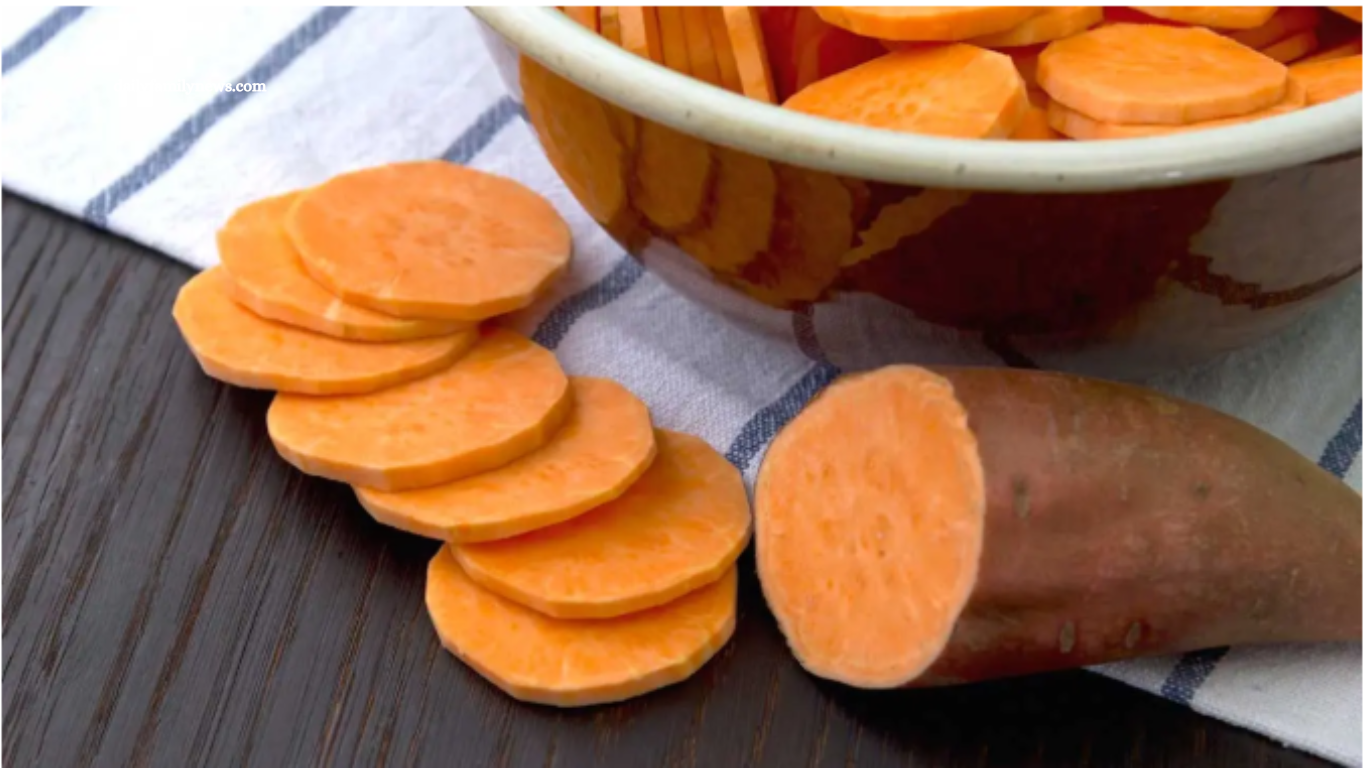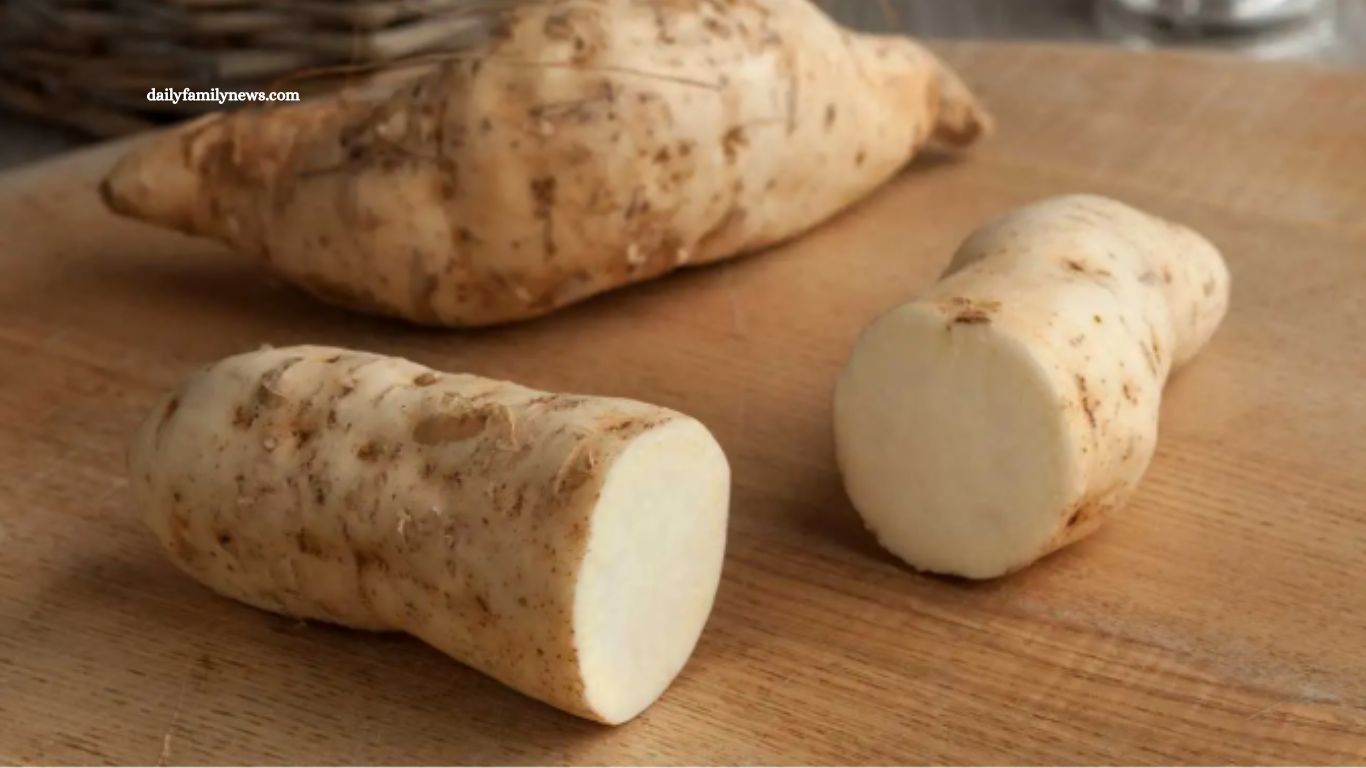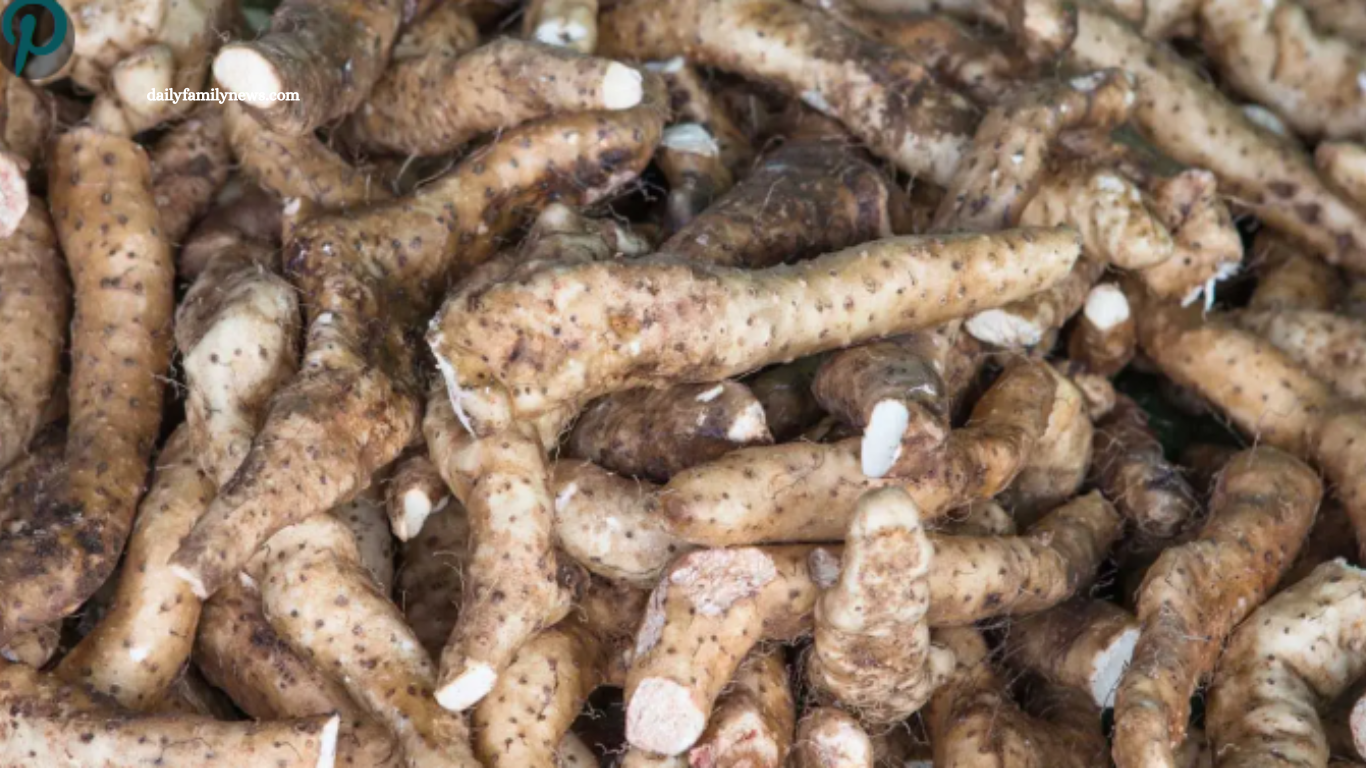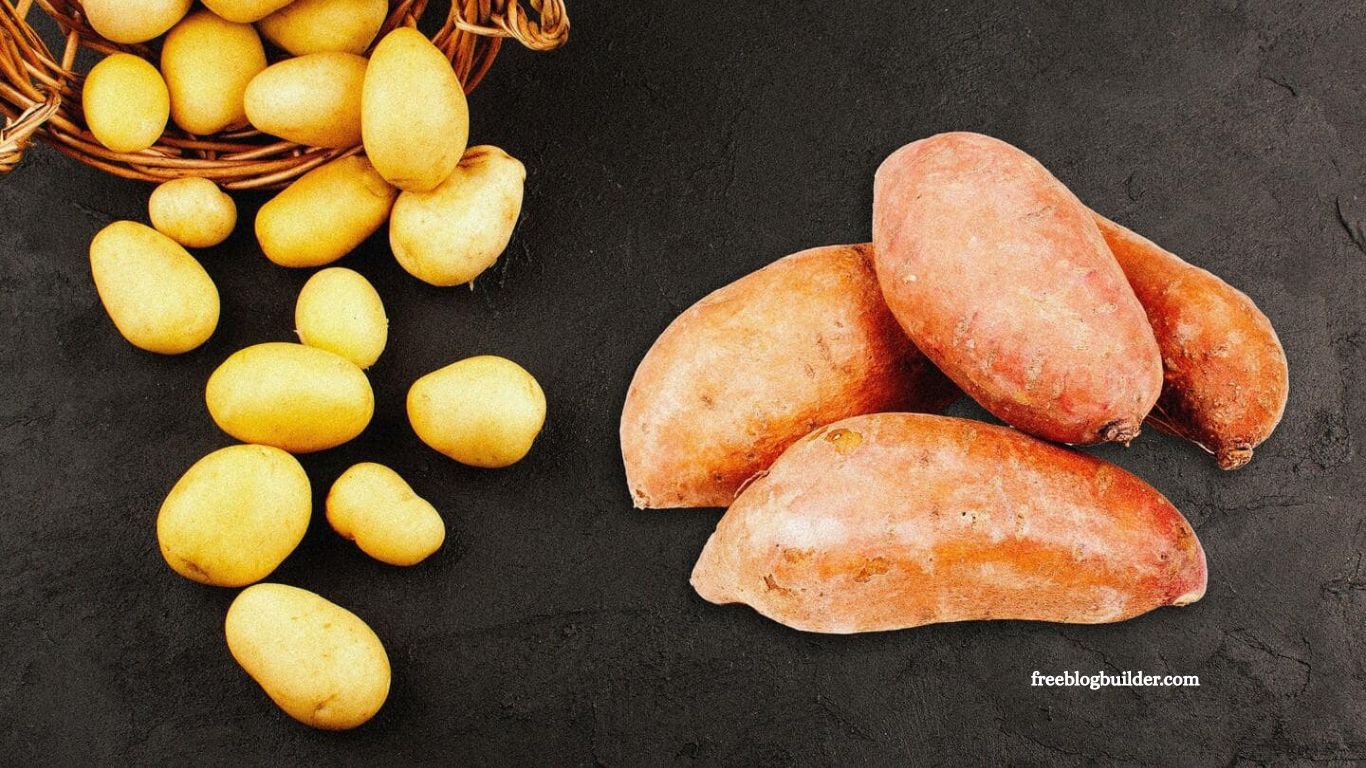While the terms “sweet potato” and “yam” are frequently used interchangeably in everyday conversation, they actually refer to two distinct vegetables with unique botanical backgrounds and nutritional profiles. Sweet potatoes are widely available, known for their natural sweetness and rich nutrient content, making them a popular choice in many cuisines.
In contrast, yams are starchier root vegetables with a different texture and flavor, often found in African, Caribbean, and Asian markets. Despite their differences, the similarity in names has caused considerable confusion among consumers. This article aims to clarify the distinctions between sweet potatoes and yams, exploring their botanical classifications, culinary uses, and nutritional benefits to provide a clear understanding of these two often-misidentified vegetables.
Read More: Unlock Knowledge with ZLibrary: Free eBooks & Academic Tools
What to Know About Sweet Potatoes
Sweet potatoes (Ipomoea batatas) are starchy root vegetables that, despite their name, are only distantly related to regular potatoes. Both are tuberous plants whose roots are commonly consumed as vegetables, but sweet potatoes stand out with their unique appearance and nutritional qualities. In addition to their roots, the leaves and shoots of the sweet potato plant are occasionally used as nutritious greens.
Sweet potatoes have a distinctive elongated and tapered shape, featuring smooth skin that can range widely in color—including yellow, orange, red, brown, purple, or beige. The flesh also varies, from white and pale hues to vibrant orange and deep purple, depending on the variety. Generally, sweet potatoes are categorized into two main types: those with dark skin and orange flesh, and those with golden skin and pale flesh.
Dark-skinned sweet potatoes with orange flesh

Compared to golden-skinned varieties, dark-skinned sweet potatoes are softer and sweeter, featuring a rich copper-brown skin and vibrant orange flesh. When cooked, they typically have a fluffy and moist texture. These sweet potatoes are widely available and particularly popular throughout the United States.
Golden-skinned sweet potatoes with pale flesh

Golden-skinned sweet potatoes, in contrast, are firmer in texture with light yellow flesh. They are less sweet than their dark-skinned counterparts and tend to be drier when cooked.
Regardless of variety, sweet potatoes are generally sweeter and more moist than regular potatoes. They are also remarkably hardy, with a long shelf life that makes them available year-round. When stored properly in a cool, dry place, sweet potatoes can remain fresh for two to three months.
They are commonly sold whole, but you can also find them in a variety of convenient forms—pre-peeled, cooked, canned, or frozen—making them easy to incorporate into a wide range of meals.
What to know about yams

Yams are also tuber vegetables, but they differ significantly from sweet potatoes in appearance, taste, and origin. With over 600 known varieties, yams vary widely in size—ranging from the size of a small potato to massive roots measuring up to 5 feet (1.5 meters) in length.
One of the easiest ways to distinguish yams from sweet potatoes is by their shape and skin. Yams are typically cylindrical with rough, bark-like brown skin that is difficult to peel but softens when cooked. Their flesh can range in color from white or yellow to purple or pink, depending on the variety.
In terms of flavor and texture, yams are much starchier and drier than sweet potatoes, with a more neutral, less sweet taste. They are also known for their good shelf life, though storage durability can vary among types.
In the United States, true yams are relatively rare and are usually imported. They are most commonly found in international or specialty grocery stores, particularly those that cater to African, Caribbean, or Asian cuisines.
Why people confuse sweet potatoes with yams
The terms “sweet potato” and “yam” are often used interchangeably, leading to widespread confusion—especially in the United States. Despite their frequent mislabeling in supermarkets, these two vegetables are botanically and culturally distinct.
Several factors contribute to the mix-up. When Africans were forcibly brought to the Americas through the transatlantic slave trade, they encountered sweet potatoes that resembled the yams they knew from home. They referred to these local tubers as “nyami,” which translates to “yam” in English. Over time, the name stuck.
The confusion deepened in the mid-20th century, when a darker-skinned, orange-fleshed variety of sweet potato was introduced to the U.S. market. To differentiate it from the more common pale-fleshed variety, producers began labeling it as a “yam”—a practice that persists today.
As a result, most “yams” sold in American grocery stores are not true yams at all, but simply a type of sweet potato marketed under a different name.
Yams and sweet potatoes are prepared and eaten differently
Culinary Uses of Sweet Potatoes and Yams
Both sweet potatoes and yams are highly versatile tubers that can be prepared through various cooking methods such as boiling, steaming, roasting, or frying.
Sweet Potatoes
Sweet potatoes are more commonly available in the United States and have become integral to a wide array of traditional Western dishes, both sweet and savory. They are frequently baked, mashed, or roasted, and also puréed for use in soups and desserts. Sweet potato fries offer a popular alternative to regular fries or mashed potatoes. As a Thanksgiving staple, sweet potatoes are often featured in casseroles topped with marshmallows or transformed into sweet potato pie.
Yams
True yams are less common in Western supermarkets but remain a dietary staple in many African countries, where their long shelf life ensures a reliable food source. Purple yams are often boiled, roasted, or fried in regions such as Africa, Japan, Indonesia, Vietnam, and the Philippines, where they are also popular in desserts.
Yams are available in various forms, including whole roots, powder, and flour. In Western markets, yam flour—typically found in stores specializing in African products—is used to make dough served alongside stews or casseroles, much like instant mashed potatoes. Additionally, wild yam powder, known under names such as wild Mexican yam, colic root, or Chinese yam, is sold in health food and supplement stores.
The nutrient content of sweet potatoes and yams varies
Sweet potatoes and yams are both nutrient-dense tubers, offering a range of essential vitamins, minerals, and fiber. However, they differ significantly in their macronutrient composition and micronutrient profiles.
Sweet Potatoes (per 100g, raw, skin removed)
- Water: 79.5 g
- Carbohydrates: 17.3 g
- Sugars: 6.06 g
- Fiber: 4.44 g
- Protein: 1.58 g
- Fat: 0.38 g
- Calcium: 22 mg
- Iron: 0.4 mg
- Magnesium: 19.1 mg
- Potassium: 486 mg
- Vitamin C: 14.8 mg
- Vitamin K: 0.2 mcg
Sweet potatoes are especially rich in vitamin C, potassium, and beta carotene—a powerful antioxidant that the body converts into vitamin A. In fact, a 100-gram serving provides nearly 100% of the recommended daily intake of vitamin A, which plays a critical role in vision, immune function, and skin health.
Yams (per 100g, raw)
- Water: 69.6 g
- Carbohydrates: 27.9 g
- Sugars: 0.5 g
- Fiber: 4.1 g
- Protein: 1.53 g
- Fat: 0.17 g
- Calcium: 17 mg
- Iron: 0.54 mg
- Magnesium: 21 mg
- Potassium: 816 mg
- Vitamin C: 17.8 mg
- Vitamin B6: 0.293 mg
- Vitamin A: 7 mcg
Yams are higher in carbohydrates and potassium than sweet potatoes, but contain much less natural sugar. They also provide vitamin C and B6, as well as a modest amount of vitamin A.
Sweet potatoes offer a stronger nutritional punch in terms of antioxidants and vitamin A, making them particularly beneficial for eye health and immunity. Yams, on the other hand, provide more potassium and a lower sugar content, which may be preferable for certain diets. Both are good sources of dietary fiber and contain important B vitamins that support energy metabolism and cellular function.
The glycemic index (GI) of sweet potatoes and yams also varies
Beyond nutrient content, the glycemic index (GI) of sweet potatoes and yams is an important factor—particularly for individuals managing blood sugar levels. The GI measures how quickly a food raises blood glucose, on a scale of 0 to 100. Foods with a low GI (≤55) are digested slowly and result in a gradual rise in blood sugar, while those with a high GI (≥70) cause a rapid spike.
Sweet potatoes tend to have a medium to high GI, typically ranging from 58 to 91, depending on how they are prepared. Baking, for instance, significantly raises their GI. Conversely, boiling sweet potatoes can lower their GI, resulting in a slower blood sugar response.
Yams generally have a lower GI than sweet potatoes, falling in the 55 to 67 range. Like sweet potatoes, their glycemic impact is also affected by preparation methods. Boiled yams tend to produce a more gradual rise in blood sugar compared to those that are roasted or fried.
For those concerned about blood sugar management—such as people with diabetes or insulin resistance—boiling is the preferred cooking method for both sweet potatoes and yams, as it helps maintain a lower GI
The potential health benefits of sweet potatoes and yams are different
Health Benefits of Sweet Potatoes and Yams
Sweet Potatoes
Sweet potatoes are a rich source of beta-carotene, a precursor to vitamin A, which plays a vital role in immune function, vision, and skin health. In developing countries, where vitamin A deficiency is prevalent, sweet potatoes—particularly orange-fleshed varieties—can be a highly effective dietary intervention for improving vitamin A status.
They are also loaded with antioxidants, especially carotenoids, which are linked to a reduced risk of chronic diseases such as heart disease and certain cancers. Among sweet potato varieties, purple sweet potatoes have been found to contain the highest levels of antioxidants—often exceeding those found in many fruits and vegetables.
Emerging research suggests that certain types of sweet potatoes may help regulate blood sugar levels and reduce LDL (“bad”) cholesterol, particularly in individuals with type 2 diabetes. These effects are likely due to their fiber content and antioxidant properties.
Yams
The health benefits of yams are less extensively studied, but early research shows promise. Yams contain various bioactive compounds, and some evidence suggests potential benefits for hormonal health.
For example, a small 2005 study involving 22 postmenopausal women found that consuming a high amount of yam over 30 days was associated with improved hormone levels, reduced LDL cholesterol, and increased antioxidant activity. However, these findings are preliminary and based on a limited sample size. More robust, large-scale studies are needed to confirm these effects.
Precautions When Eating Sweet Potatoes and Yams
While sweet potatoes and yams are generally safe and nutritious for most people, there are a few important precautions to keep in mind.
Sweet Potatoes
Sweet potatoes are high in oxalates, naturally occurring compounds found in many plant-based foods. For most people, oxalates are harmless. However, individuals who are prone to kidney stones—especially those formed from calcium oxalate—may need to limit their intake of high-oxalate foods like sweet potatoes to reduce the risk of stone formation.
Yams
Unlike sweet potatoes, certain types of yams should never be consumed raw. Some wild yam varieties contain naturally occurring plant toxins, such as dioscorine and other alkaloids, which can cause adverse reactions or illness if eaten uncooked. Proper peeling and thorough cooking neutralize these compounds and make yams safe to eat.
For both sweet potatoes and yams, proper storage and preparation are essential to ensure safety and preserve nutritional quality. When in doubt—especially with unfamiliar yam varieties—always cook thoroughly and consult reliable sources or professionals for guidance.
Frequently Asked Questions
Are sweet potatoes and yams the same thing?
No. Despite common usage, sweet potatoes and yams are botanically and nutritionally distinct. Most “yams” sold in U.S. grocery stores are actually a variety of sweet potato.
Why are sweet potatoes sometimes labeled as yams?
The term “yam” was adopted in the U.S. to distinguish orange-fleshed sweet potatoes from paler varieties. This naming was influenced by West African terminology and persists today largely for marketing purposes.
Can you eat sweet potatoes raw?
Yes. Sweet potatoes can be eaten raw, although they are more commonly cooked. Cooking enhances their flavor and makes them easier to digest.
Can you eat yams raw?
No. Certain types of yams contain natural toxins that can be harmful if eaten raw. They must be peeled and cooked thoroughly before consumption.
Which is healthier: sweet potatoes or yams?
Sweet potatoes are generally more nutrient-dense, especially in vitamin A (from beta-carotene), and are better studied for health benefits. However, yams offer higher potassium and lower sugar, and may be better suited for certain diets.
Do sweet potatoes or yams raise blood sugar levels more?
It depends on the cooking method. Baked sweet potatoes tend to have a higher glycemic index (GI) than yams. Boiling either vegetable helps lower their GI and results in a slower impact on blood sugar.
Are sweet potatoes good for people with diabetes?
Yes—especially when boiled or prepared with minimal added sugar or fat. They contain fiber and antioxidants that may help support blood sugar control, though portion size and preparation are key.
Conclusion
Although sweet potatoes and yams are often confused, they are two distinct root vegetables with unique origins, nutritional profiles, and culinary uses. Sweet potatoes are more widely consumed in Western countries and are especially valued for their high beta-carotene content, antioxidant properties, and versatility in both sweet and savory dishes. Yams, though less common in the U.S., are dietary staples in many parts of the world and offer benefits such as a lower glycemic index and higher potassium content.


